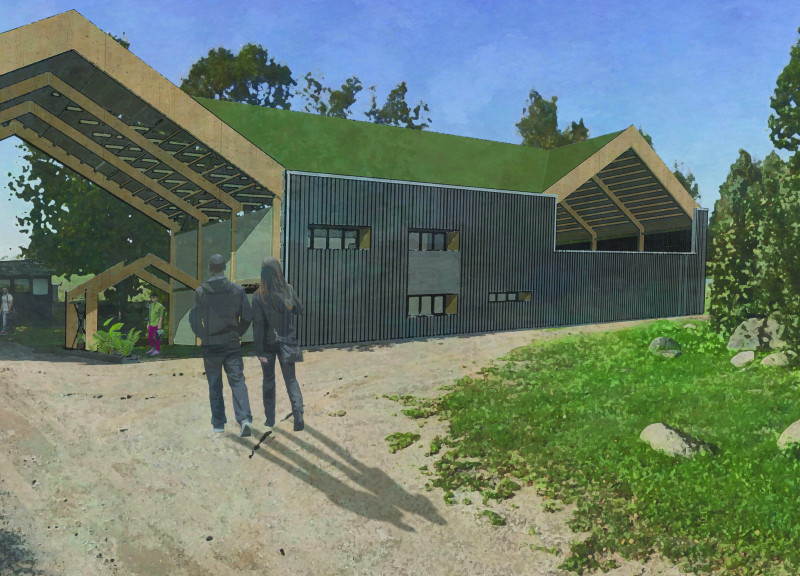5 key facts about this project
The center features a grand glulam frame that serves as both a visual focal point and a structural element, marking the entrance and promoting a seamless transition between the indoor and outdoor environments. By utilizing locally sourced materials, the design reinforces a connection to the surrounding landscape and local building traditions. Key functions of the building include a reception area, a spacious lobby, shower facilities for campers, and a viewing deck that offers unobstructed views of the natural scenery.
A significant aspect of the project is its emphasis on sustainability and environmental integration. The design employs a green roof that supports local flora and provides insulation, effective rainwater management systems to reduce water consumption, and a thermal envelope that promotes energy efficiency. These elements are essential in demonstrating a commitment to sustainability within the architectural framework.
Unique Design Approaches
The Pape Portal distinguishes itself from similar projects through its thoughtful integration of traditional architectural motifs with modern construction techniques. The use of blackened timber cladding not only provides durability but also reflects regional aesthetics, creating a visual harmony with the landscape. The provision of open public spaces within the facility encourages social interactions and community engagement, facilitating a sense of belonging and connection among visitors.
Furthermore, the architectural design emphasizes transparency and openness with strategically placed windows that enhance natural light and minimize energy use. These features contribute to the overall experience, providing occupants with an immersive connection to the surrounding natural environment. The balance between built spaces and the outdoors illustrates a unique approach to modern architectural design, aligning with contemporary ecological practices.
Reflecting on the architectural sections and plans further reveals the meticulous crafting of spaces that cater to diverse user needs while maintaining simplicity and functionality. The project advocates a design philosophy that values local knowledge, sustainability, and community-oriented spaces.
For those seeking to explore the architectural plans, sections, and detailed design elements further, an in-depth review of the Pape Portal project presentation is highly encouraged to gain a comprehensive understanding of its architectural ideas and methodologies.


























